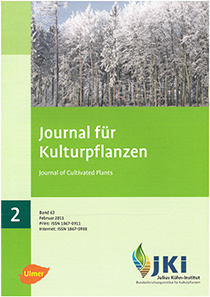A method for a stochastic simulation of spray drift values as basis for a georeferenced probabilistic exposure assessment of surface waters
DOI:
https://doi.org/10.5073/JfK.2011.02.02Keywords:
Probabilistic, drift, GIS, field crop, plant protection, landscapeAbstract
In this work we propose a novel approach to model realistic spray drift deposition distributions for any distances up to 75 m for arable crops and 150 m for permanent crops. The model can be used in georeferenced exposure and risk assessments of surface waters on landscape and stream segment scale. The approach is described for field crops as an example. Drift measurement datasets of Ganzelmeier et al. (1995) and Rautmann et al. (1999) are reanalyzed and interpreted according to the underlying experimental design. The approach applies a trial-by-trial analysis of the datasets which allows to consider the variation of application conditions between trials such as air temperature, wind speed, nozzle type, vehicle speed, rel. humidity. Polynomial functions are fitted to the means of the logarithmized mean and standard deviation of the drift measurement datasets.
Results show that the output of simulations according to the experimental design for spray drift measurements fit very well to the drift measurement data. When the model is applied to a number of realistic landscape exposure situations, the simulation results show a 22% to 62% lower loading in the 90th percentile compared to a deterministic model.
Downloads
Published
Issue
Section
License
The content of the journal is licensed under the Creative Commons Attribution 4.0 License. Any user is free to share and adapt (remix, transform, build upon) the content as long as the original publication is attributed (authors, title, year, journal, issue, pages).
The copyright of the published work remains with the authors. The authors grant the Journal of Cultivated Plants, the Julius Kühn-Institut and the OpenAgrar repository the non-exclusive right to distribute and exploit the work.







